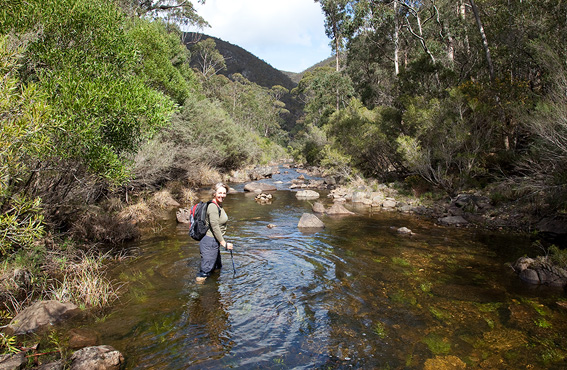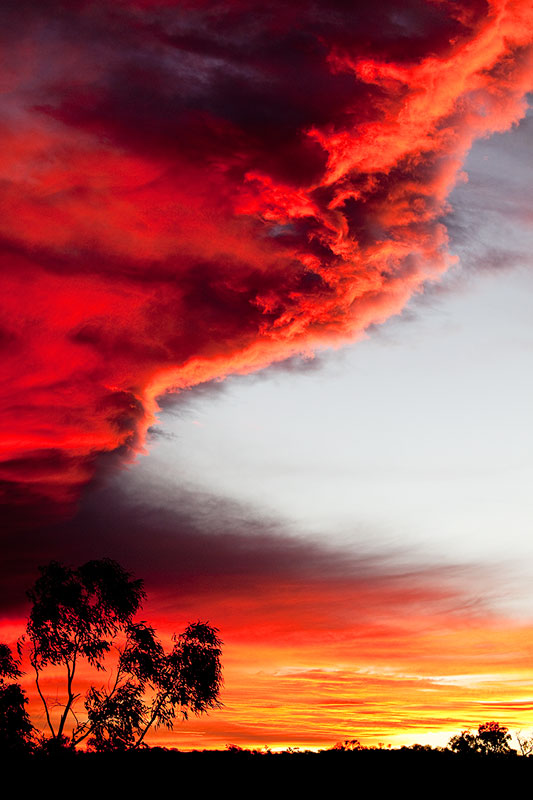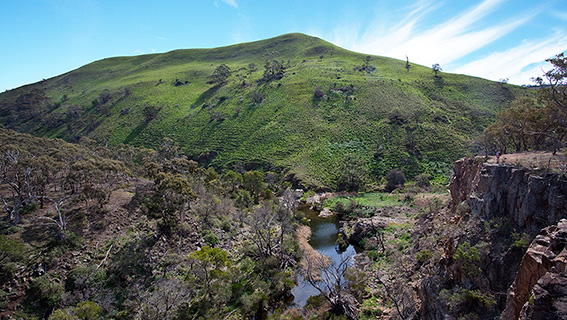
It’s hard to believe that so close to Melbourne exists such a gem of a park. The Lerderderg State Park offers a plethora of walk choices. We chose the Bears Head Circuit, a 15+k walk that keeps you interested from start to end. As all great walk stories must include, the weather was perfect. Starting off on what looked a little like the small village roads you see in the UK, we were surprised and pleased, to see an old Red Rattler on one of the side properties. Although in a state of disrepair, it didn’t fail to ignite the wanderings down memory lane. After about 10 minutes of childhood memories, we were eager to continue on and headed into the bushland proper. From the steep descent down the gorge, we were then greeted by a river which was far from a trickle. Our initial plans of walking up the river bed dry were abandoned. Rather than bush bash along some of the heavily vegetated banks we opted for walking up the river bed wet. What a great choice! The water was refreshing and allowed us to (carefully) traverse from one side to the other visiting the disused mining areas that were built along the banks. Dry stoneworked water races allowed us an even walking surface before once again heading off track for a bit of an explore or another dip of the toes, and legs, into the river. An exciting rock scramble up the Bears Head Ridge gave us amazing views of the park and beyond. Made all the more interesting by the fact that the the sense of remoteness we were experiencing was offset by the sight of Melbourne city not too far in the distance.
I had a brilliant day, it kept my interest up the whole time. Great little lunch and snack spots, history trips back in time and some very definite ideas about overnight camps.







